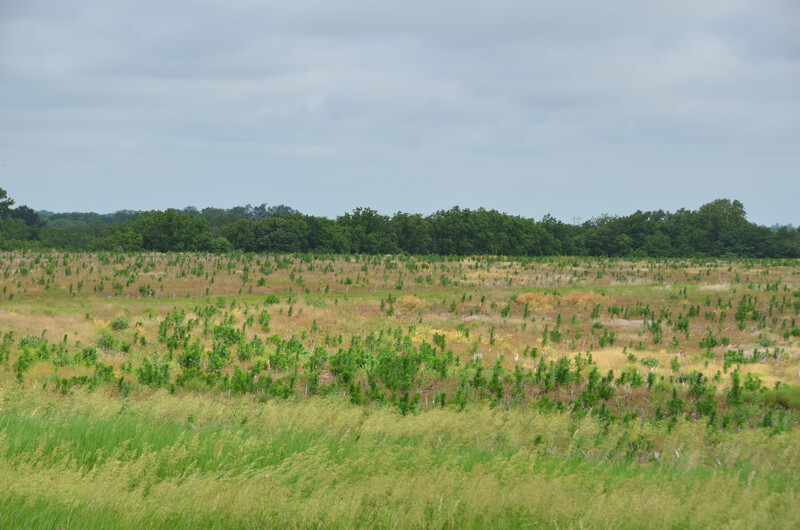Published May 4, 2020 | By Mike Petersen
Image Above:
Prevent Planting field in the Platte River Valley – Nebraska
As we saw in the middle-few days of April, we saw a dump of snow from the Rockies eastward into Iowa dump 6 to 12 inches here and there of the Christmas Joy, many said Bah-Humbug, tho a reminder came to some of us who are weather watchers – another wet spring. What does that conger up? Oh we hope not, more Prevent Planting. Then nice days came the last two weeks for a good cross section of the Midwest – time to get after the 2020 crop year.
It is being brought up here on Precision Tillage to offer some thoughts and comments what happened last year and what ideas may be important for you all that dealt with 2019’s Prevent Planting ground, especially in fertility management. A question that comes up; I had lots of weed growth – how does that effect my fertility program for 2020? Great question for our discussion. I am a student of soil testing but not just any ole go out with a bucket, 10 inch probe and poke a few holes 35 ft into the field and co-mingle the samples and send them off and call it good. Consider what species of weeds were dominant. Were these weeds in patches such as huge areas of pigweed or Palmer Amaranth? Did Russian thistle mix or take over the sandier spots? In the low lying areas, did Johnsongrass, Quackgrass, Crabgrass, Nutsedge, Yellow and Green foxtail become overwhelming? I am asking because those weedy species all consumed a tidy amount of nutrition some are nitrogen consumers others the full spectrum of nutrients and not only in the upper 12 inches but deep (>24 inches).
There is also the issue of an enormous seed bank now in your field that will become very problematic on into the future which can offer challenges. Another question; were you able to get into that field or fields and manage the weed growth before they went to seed? I ask this because those fields will suffer from what is called the “Fallow Syndrome”. No doubt before the weeds canopied the soil surface the surface baked hard and there was oxidation of organic matter, soil biological activity was reduced, mycorrhizal fungal spores did not germinate and do their job with corn or whatever crop we normally plant. Some of those spores desiccated and others sat and will wait for a symbiotic host’s root to arrive. All of this is part of the “Fallow Syndrome”. Sure the soil may have seemed to have rested but, when weeds went wild and grew prolifically – a real detriment was against you the grower.
A third issue with Prevent Planting and fallowing ground are losses of residual fertility due to certain percolation and losses out the bottom of the profile. True phosphates do not move very far downward unless they are in the soluble form in soil solution which was the conditions you sustained with wet, wet soils. Also sulfur components and maybe some micronutrients leached and reached a water course or water table and gone. Deep soil testing can be a tool to determine how much is gone.
Why is the agronomist with a tillage implement manufacturer visiting this issue?
I assume by now many have done some form of tillage to deal with the impact of those pesky weeds, with a so called cleanup operations. What to do? Do not think you have solved the weed bank, changed the surface 4 to 6 inches, root balls from the big broadleaf weeds and un-oxygenated soil conditions? Please I am not trying to say all is awry, but if soil conditions are amenable the strip till tool with precision placement of this year’s nutrition program can be very wise choice in preparation for the 2020 year. Yes last year was unfortunately a stinker and a loss of income. Using a smart and conservation minded system that can go through all the leftovers, minimize disturbance before you plant and broad-acre tillage only encourages more weed species. So to minimize unnecessary soil compaction which wetter soils are prone to so often Strip tillage can work. With the benefits also of less fuel consumption with strip till unless you have already disked the field twice and a surface leveling tool after already, strip till can be effective. That potential weed seed bank does not need to fed again with high priced nutrients, strip till and placing a portion of your total program in the pathway of the crop you are planting has loads of potential you desire after a year of nothing.
We at Orthman empathize problems that occurred with last year’s flooding and wetness just obliterating the farming potential. Today we would like to team up and help you see this Strip Till System one that hold potential and financial gains.
By: Mike Petersen, Agronomist/Soil Scientist
